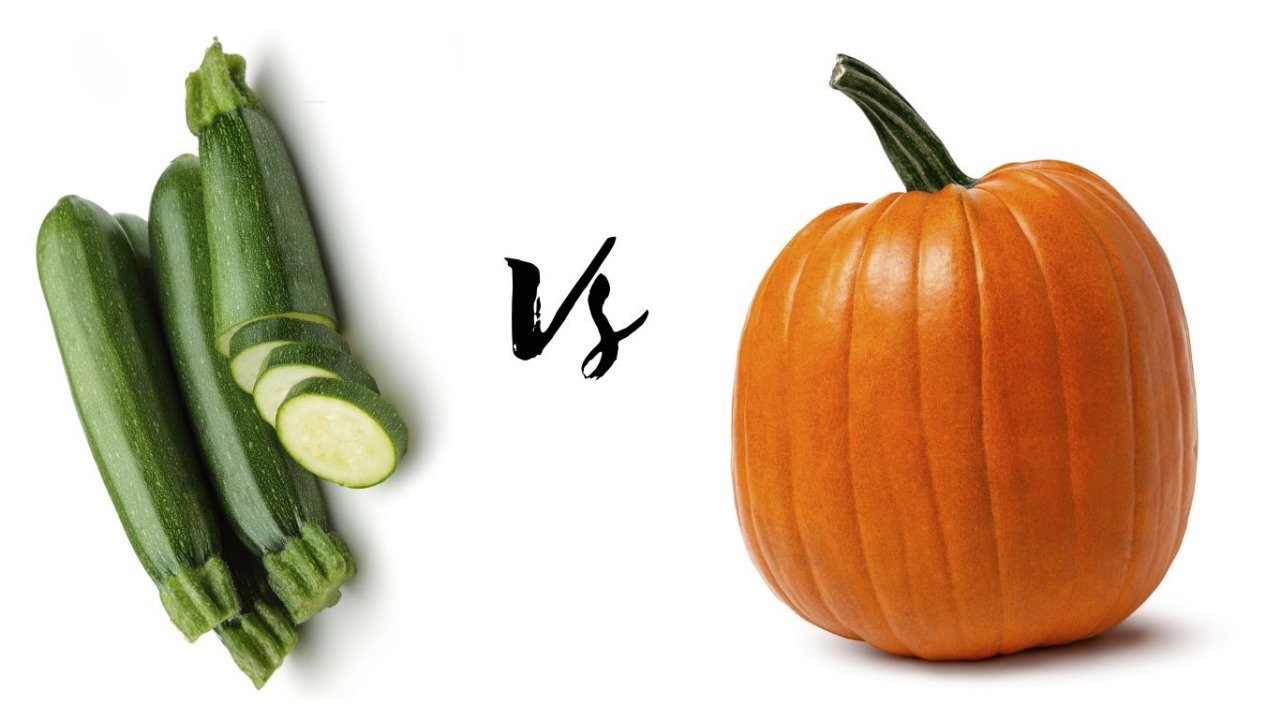Gardening enthusiasts often find themselves debating the merits of different plants, seeking the ideal addition to their garden. Two popular contenders in this ongoing discussion are zucchini vs pumpkin plants. Both belonging to the squash family, these vegetables share similarities but also boast distinct features. In this comprehensive guide, we will delve deep into the realm of zucchini vs pumpkin plant, providing valuable insights for gardeners of all expertise levels.
Zucchini vs Pumpkin Plant: Zucchini Plants
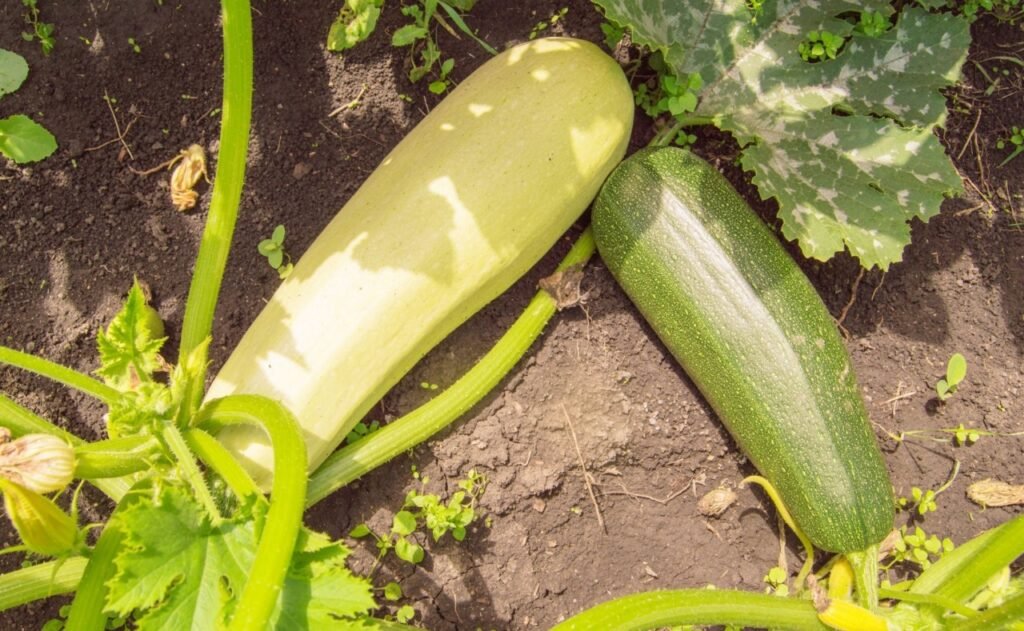
Zucchini plants, or Cucurbita pepo, are unique plants in gardens and kitchens. Let’s briefly talk about them.
1. How They Look:
Zucchini plants are a little small. They have big leaves and pretty yellow flowers. The vegetables we eat, Zucchinis, are picked when they are small and soft. Unlike pumpkins, zucchini plants grow upwards more, making them suitable for smaller gardens.
2. Cooking Variety:
Zucchinis are great for cooking because you can use them in many recipes. They are good in stir-fries, salads, and even cakes. Their taste is mild, and they can be cooked in different ways. This differs from pumpkins, which have a sweeter taste and are used in soups and pies.
3. Good for You:
Zucchinis are healthy. They don’t have many calories and vitamins and minerals that our bodies need. They are suitable for people who want to eat healthy food.
4. How to Take Care of Them:
When zucchinis are about 6-8 inches long, they are ready to be picked. This keeps them tasty. Zucchini plants need soil that drains well, sunlight, and water. But they are relatively easy to care for, especially beginners.
In short, zucchinis are small plants with extensive possibilities. They are easy to cook, good for your health, and not too tricky to grow. Whether you fry or put them in a salad, zucchinis add something special to your meals.
Zucchini vs Pumpkin Plant: About Pumpkin Plants
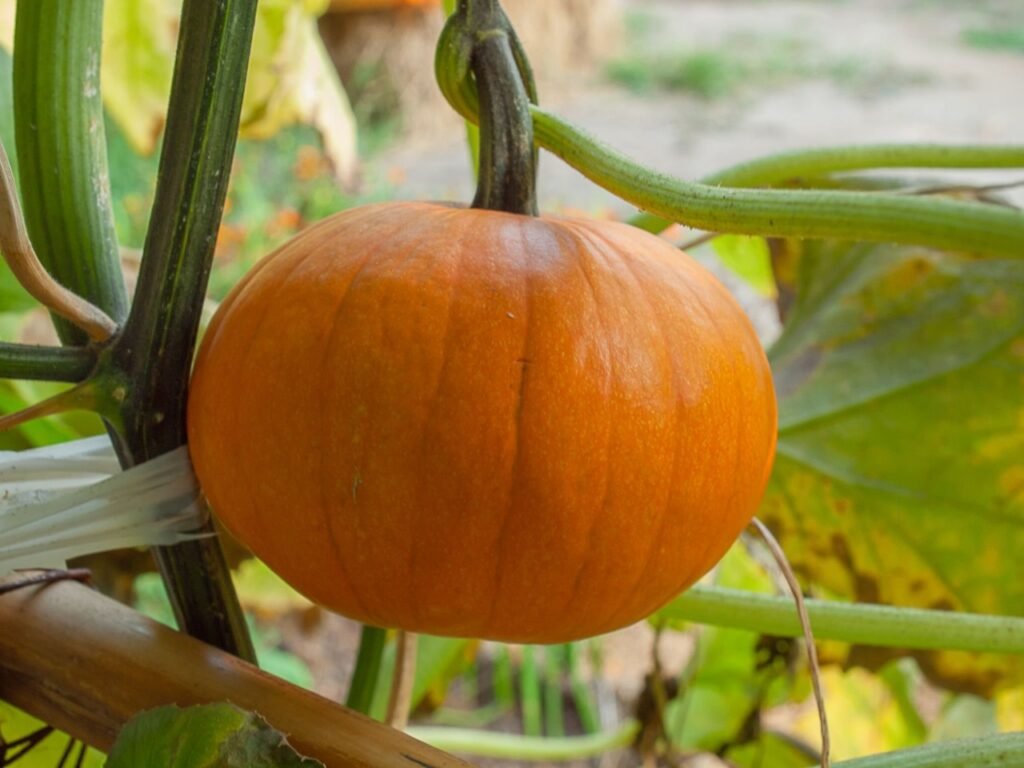
Pumpkin plants are exciting and valuable in gardens and kitchens. Let’s easily talk about them.
1. How They Look:
Pumpkin plants have big leaves and colorful flowers, usually yellow or orange. They grow in long vines and make giant pumpkins with rugged skin. Unlike zucchini plants, pumpkins need much space to grow because their vines spread out.
2. What We Do with Them:
Pumpkins are great for cooking. We can roast them, make soups and pies, and even use them for decoration. They taste sweet and nutty, unlike zucchinis, which have a milder taste.
3. Other Uses:
Besides cooking, pumpkins are also used for decoration. People carve them into fun shapes for Halloween. Pumpkins are colorful and robust, making them perfect for creative decorations.
4. Good for You:
Pumpkins are healthy. They have vitamins, especially vitamin A, which is good for our eyes. Pumpkins also have fiber, which helps with digestion. The seeds contain protein and good fats, making them a healthy snack.
In short, pumpkins are giant, colorful plants with lots of uses. They are suitable for eating and decorating. Whether you’re making a delicious pumpkin soup or carving a pumpkin for Halloween, they add something special to your garden and your table.
Zucchini vs Pumpkin Plant: Understanding the Differences
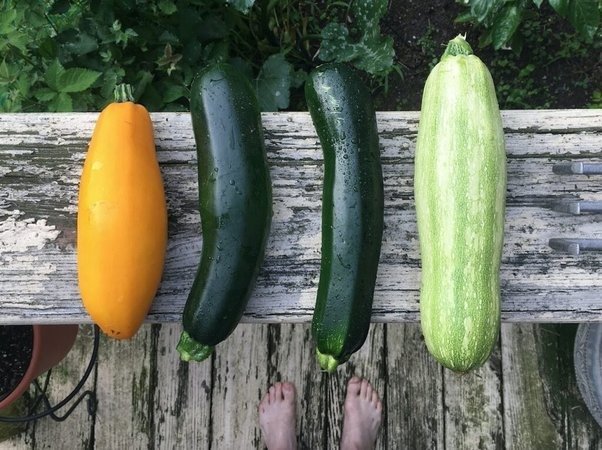
Zucchini vs pumpkin plant might seem similar, but they have essential differences. Let’s make it simpler.
How They Look:
Zucchini plants are small with dark green leaves. They have yellow flowers, and zucchinis are picked when they’re young. Pumpkin plants spread out more; pumpkins are giant and have rough skin.
How We Use Them: Zucchini vs Pumpkin Plant
Zucchinis are soft and can be used in many recipes like salads and stir-fries. Pumpkins are sweet and are suitable for making pies and soups.
What’s Inside:
Zucchinis have vitamins and minerals. Pumpkins have lots of vitamin A, which is good for your eyes, and they also have fiber.
When We Harvest Them: Zucchini vs Pumpkin Plant
Zucchinis are usually picked in summer when they’re small. Pumpkins are harvested in the fall when they’re fully grown.
So, zucchinis are small, soft, and significant for many recipes, while pumpkins are big, sweet, and perfect for pies and soups. Understanding these differences can help you enjoy them in your cooking.
Distinguishing Features: Zucchini vs Pumpkin Plant
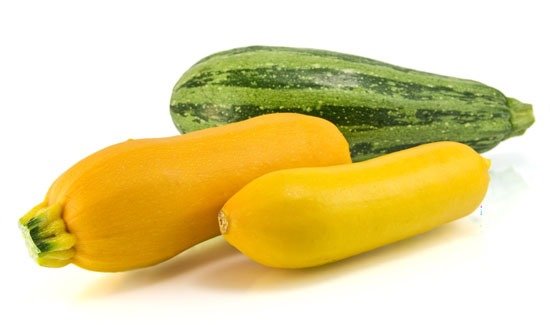
1. Appearance:
Zucchini: Zucchinis are slender, elongated vegetables typically green, although some varieties can be yellow or striped. They have smooth skin and a vibrant, fresh appearance.
Pumpkin: Pumpkins, on the other hand, come in a wide array of sizes, shapes, and colors. They can be small and round or large and oblong. Pumpkins exhibit hues ranging from deep, rich orange to pale, muted yellow, and their skin is often textured and ridged.
2. Taste and Texture:
Zucchini: Zucchini has a delicate, slightly sweet flavor and a tender, soft texture. This makes it incredibly versatile in the kitchen, as it can be used in savory dishes, desserts, and baking. Its mild taste allows it to blend well with various ingredients.
Pumpkin: Pumpkins offer a distinct earthy flavor, much more potent than zucchini. Their flesh is dense and fibrous, making them ideal for hearty dishes like pies, soups, and casseroles. The robust taste of pumpkin adds depth to recipes, especially in desserts and baked goods.
3. Culinary Uses:
Zucchini: Zucchinis can be prepared in numerous ways. They can be grilled, sautéed, or baked. Additionally, they can be spiralized into noodles, known as zoodles, providing a healthy alternative to traditional pasta. Zucchinis are also commonly used in Mediterranean cuisine, finding their way into salads, cakes, and even bread.
Pumpkin: Pumpkins are renowned for their starring role in pumpkin pie, a classic dessert during the fall season. However, their uses extend far beyond pie. Pumpkins are vital ingredients in soups, stews, and desserts. Their seeds, when roasted, become a popular and nutritious snack. The versatility of pumpkins allows them to be comforting and indulgent in culinary creations.
In essence, understanding the unique qualities of zucchinis and pumpkins enhances our culinary adventures. With their mild taste and soft texture, Zucchinis lend themselves to a wide range of dishes, from salads to sweets. Pumpkins, with their robust flavor and dense flesh, add depth and warmth to hearty meals and delightful desserts. Embracing these differences opens the door to a world of delicious possibilities in the kitchen.
Cultivation and Care Tips
Zucchini Cultivation:
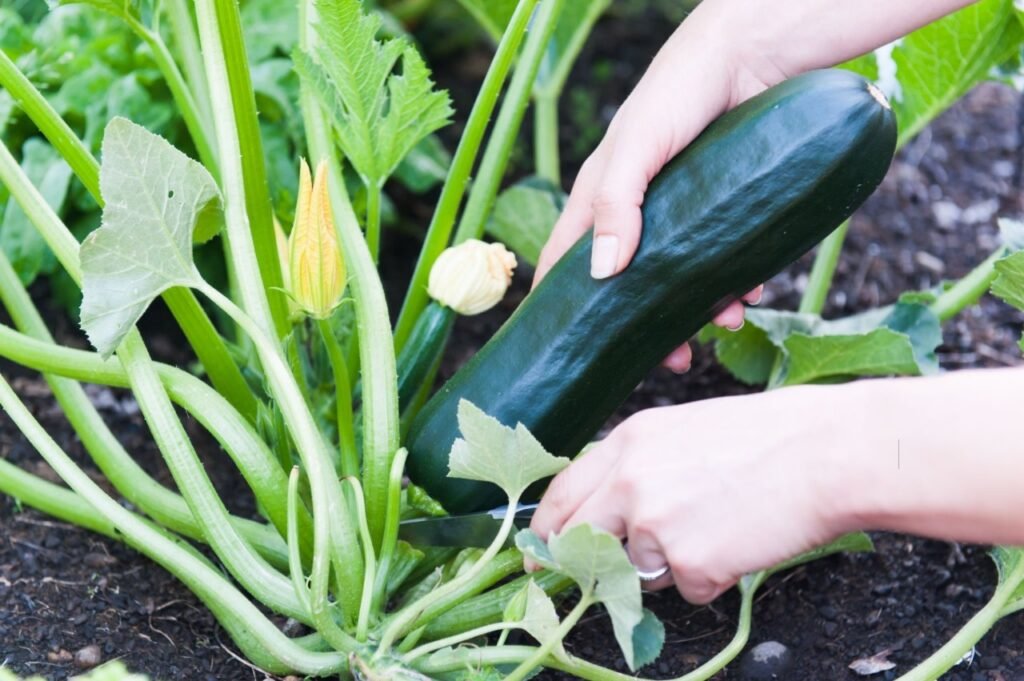
Planting Zucchinis:
Begin by planting zucchini seeds directly in the soil after the cold weather is over. Space the plants about 3 to 4 feet apart in your garden.
Caring for Zucchinis:
Zucchini plants need regular watering, so make sure the soil is consistently moist. Adding a layer of mulch around the base of the plants can help retain moisture and keep weeds away. During their growing period, zucchinis benefit from fertilization, so consider giving them plant food to ensure healthy growth and a good harvest.
Pumpkin Cultivation:
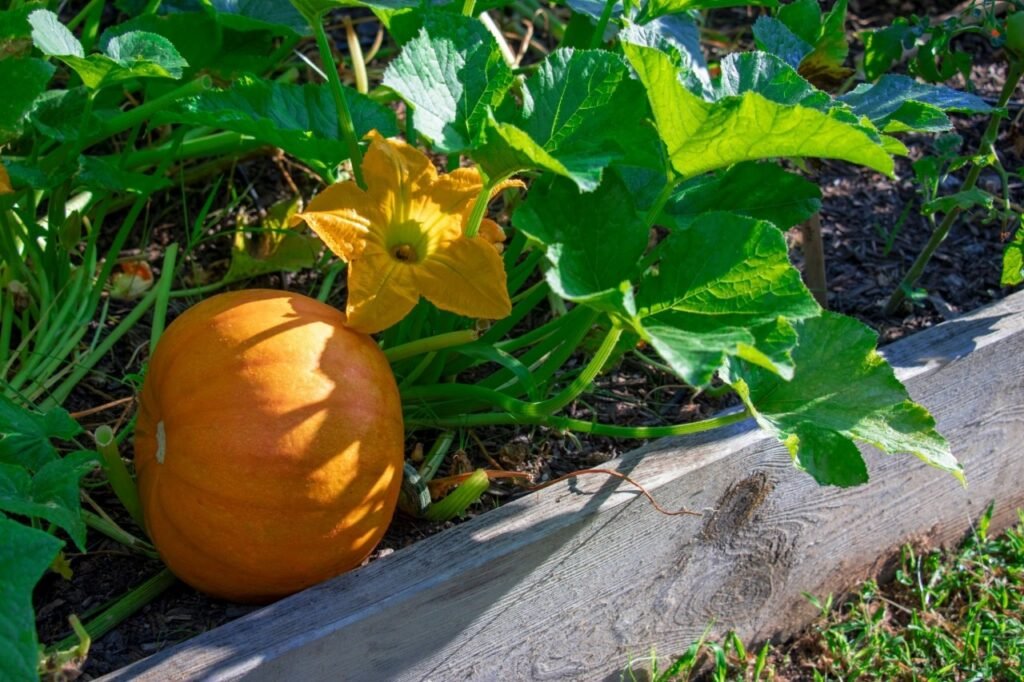
Planting Pumpkins:
When it comes to pumpkins, plant the seeds in mounds or little hills in your garden, allowing plenty of space for the vines to spread. It’s crucial to plant pumpkins after the last frost date because they need a long time to grow and mature.
Caring for Pumpkins:
Pumpkin plants require consistent watering, especially during dry spells. To help maintain soil moisture and prevent weed growth:
- Apply a layer of mulch around the plants.
- Keep a close eye on your pumpkin plants for pests like aphids and squash bugs, which can harm the leaves and fruit.
- If you notice any, take action to protect your plants, such as using natural remedies or seeking advice from a local garden center.
Zucchini vs Pumpkin Plant: Harvesting and Storage
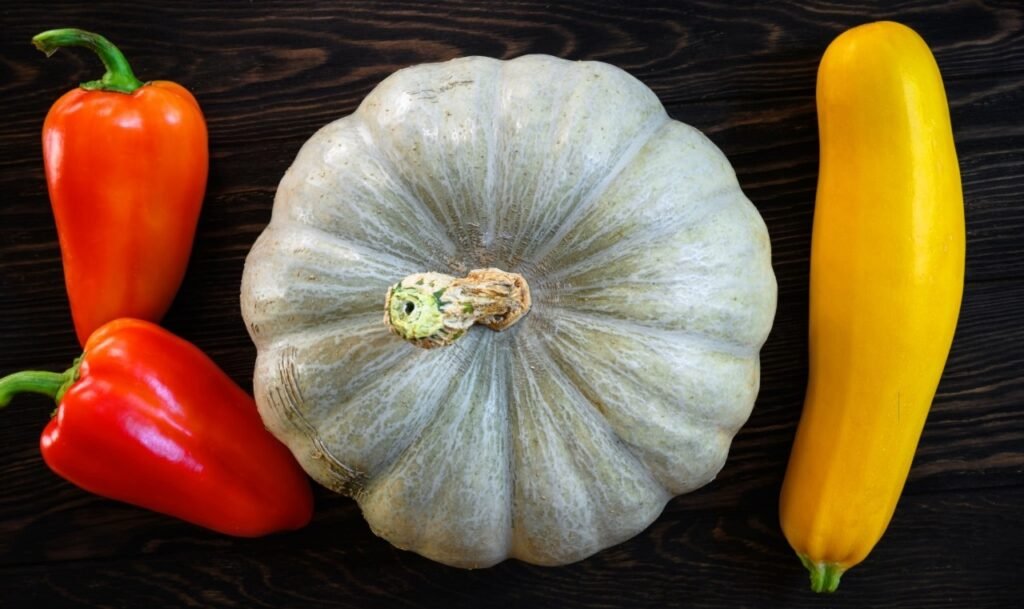
Zucchini Harvesting and Storage:
Harvesting Zucchini:
Zucchinis are at their best when young, about 6 to 8 inches long. It’s a good idea to pick them regularly; this encourages the plant to keep producing more.
Storing Zucchini:
To keep zucchinis fresh, place them in the refrigerator. They can stay suitable for up to a week. You can grate and freeze the pieces if you have more giant zucchini. This way, you can use them in your cooking later on.
Pumpkin Harvesting and Storage:
Harvesting Pumpkins:
Pumpkins are ready to harvest when they have turned their full color, usually a deep orange, and when you tap them, they sound hollow. This means they’re ripe and ready to be picked.
Storing Pumpkins:
To store pumpkins, find a cool, dry place. A pantry or cellar is perfect. Stored this way, pumpkins can last for several months. You can use them in various recipes throughout the fall and winter seasons.
In summary, pick them when they’re small for zucchinis and keep them in the fridge, or freeze them for later. For pumpkins, harvest them when they’re colorful and store them in an excellent, dry spot for long-lasting freshness. Following these steps ensures you enjoy your harvest well beyond the growing season.
Zucchini vs Pumpkin Plant: Recipes of Embracing the Flavors
Zucchini Recipes:
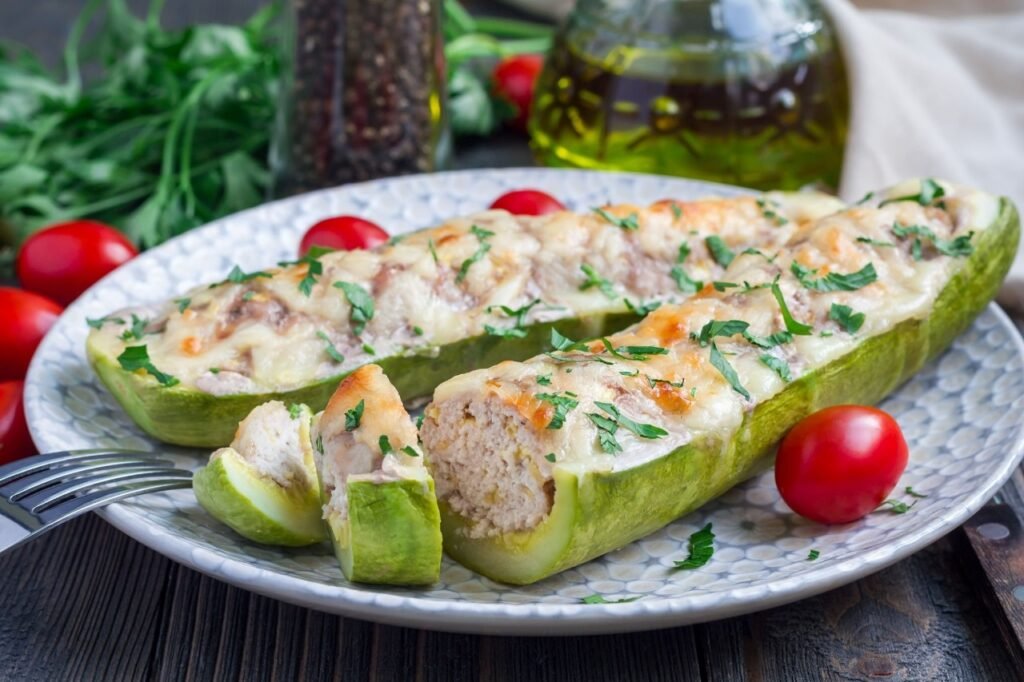
Zucchini Pasta:
Transform zucchini into a nutritious pasta alternative. Use a spiralizer to create long, thin strands resembling noodles. Pair these zucchini noodles with your favorite pasta sauce for a healthy and satisfying meal.
Zucchini Bread:
Savor the delightful taste of zucchini bread, a moist and flavorful treat. Filled with grated zucchini, this bread is a perfect blend of sweetness and freshness. Enjoy it as a delightful breakfast or a delightful dessert.
Pumpkin Recipes:
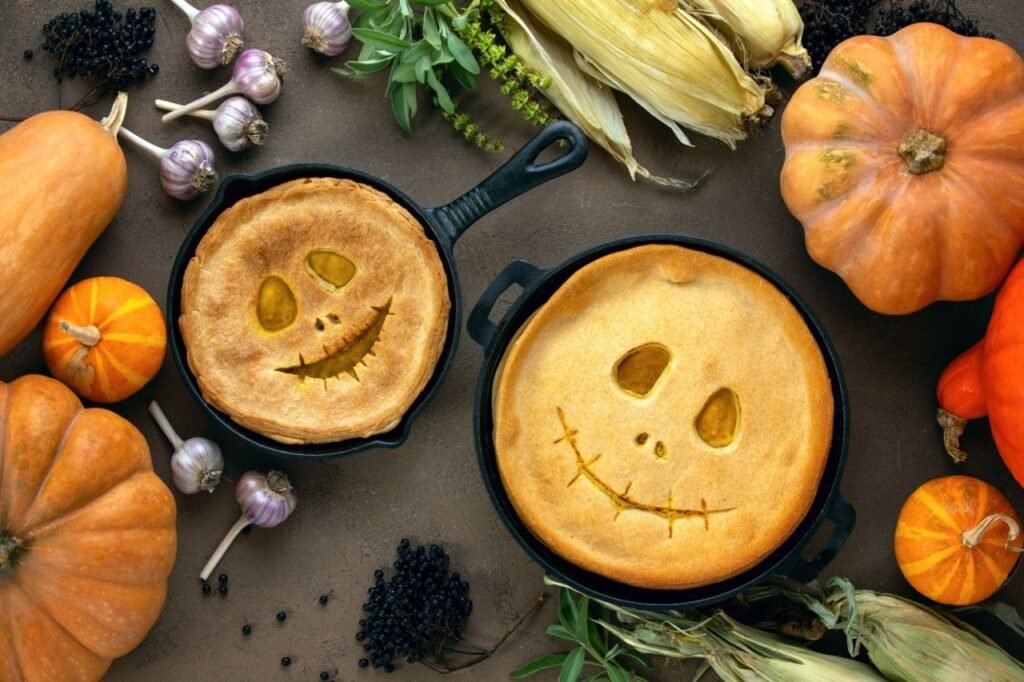
Pumpkin Soup:
Experience the warmth of a hearty pumpkin soup, especially delightful on chilly days. Infused with aromatic spices like cinnamon and nutmeg, this soup offers a comforting and flavorful experience. Serve it with a slice of crusty bread for a satisfying meal.
Pumpkin Pie:
Indulge in the timeless delight of pumpkin pie, a beloved dessert, especially during the holiday season. This classic pie features a spiced pumpkin filling encased in a flaky crust, offering a perfect balance of sweetness and spice. It’s a delightful way to end a meal, bringing warmth and comfort to your table.
these recipes offer creative ways to enjoy the flavors of zucchini and pumpkin. Whether you’re craving a comforting soup or a sweet dessert, these dishes celebrate the unique tastes of these beautiful vegetables, adding a touch of culinary magic to your table.
Conclusion:
In the zucchini vs pumpkin Plant debate, the choice ultimately depends on your gardening goals and culinary preferences. Zucchini offers versatility and rapid yields, while pumpkins bring a touch of autumnal charm and a rich, distinct flavor to your table. Whether you’re a beginner gardener or a seasoned enthusiast, both plants have their unique appeal.

